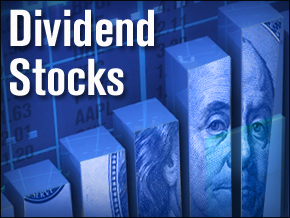
In order to receive a dividend, you need to be the holder (on record) of a given stock no later than the day before its ex-dividend date. Also referred to as “ex-date”, the ex-dividend date is important for investors because it determines whether they’re entitled to a dividend. Chronologically, this would occur after the record and ex-dividend date have been set.Some stocks pay cash (or additional stock) dividends to their investors throughout the year. In this announcement, the company will list how much the dividend will be, the ex-dividend date and the payment date. As mentioned above, this date will typically be two days before the record date.ĭeclaration Date– this is simply the day the company announces to the public that they are issuing a dividend. Currently, the record date is set for one day after the ex-dividend date.Įx-Dividend Date – once the record date is set the stock market will automatically set the ex-dividend date.

An investor must be on the company’s record as a shareholder on this date to receive the dividend. Record Date – This is the date set by a company’s board of directors once they decide to issue a dividend. There are four key dates that are part of the dividend issuing process. Key Terms That Dividend Investors Need to Know That’s because an investor has to be a shareholder of record BEFORE the ex-dividend date if they want to receive the dividend. However, for an investor looking to take a new position in a dividend stock, it’s important to know when the stock is selling ex-dividend. These buy-and-hold investors don’t concern themselves with missing an ex-dividend date. They may have owned the stock for years and are accustomed to collecting or reinvesting their dividends on a regular schedule. The Ex-Dividend Date is a Non-Event for Current Shareholdersįor many investors, collecting a dividend is something they don’t even think about. In this article, we’ll help investors understand what they need to know about the ex-dividend date including a strategy that traders can use around the ex-dividend date (or ex date). However, they will not be able to receive the upcoming dividend if they were not a shareholder of record before the ex-dividend date. On the ex-dividend date (see below), at the opening of trading, Company A’s stock will be marked down by $1.25 ($5/4 = $1.25).Īny investor buying stock will be purchasing it at the discounted price, $148.75. A simple example can help explain this.Ĭompany A’s stock is selling for $150 per share, and it announces a $5.00 annual dividend that will be paid in quarterly installments. When a stock sells ex-dividend it is trading without the dividend added to its stock price. Knowing when a stock trades ex-dividend is essential to ensuring investors receive a sought-after dividendĮx-dividend means “without the dividend”.

:max_bytes(150000):strip_icc()/Clipboard01-1928dde9715243c8acb7abc8c3ad1c6b.jpg)
BJ’s Wholesale Club Pops, Will Costco Be Next?.Starbucks Stock, Is Brand Loyalty Enough Reason to Buy.Is Sanofi A Buy, Despite Recent Stumbles?.If You Hate Speed Cameras, Then You’ll Like Verra Mobility Stock.Near-Term Headwinds Present An Opportunity In Ross Stores.Apple’s Stock Could Be On The Verge Of Another 30% Rally.Applied Materials Results Show A Slowing Semiconductor Market.2 EV Suppliers Powering To Gains After Raising Views.The Trader's Guide to Equities Research.


 0 kommentar(er)
0 kommentar(er)
